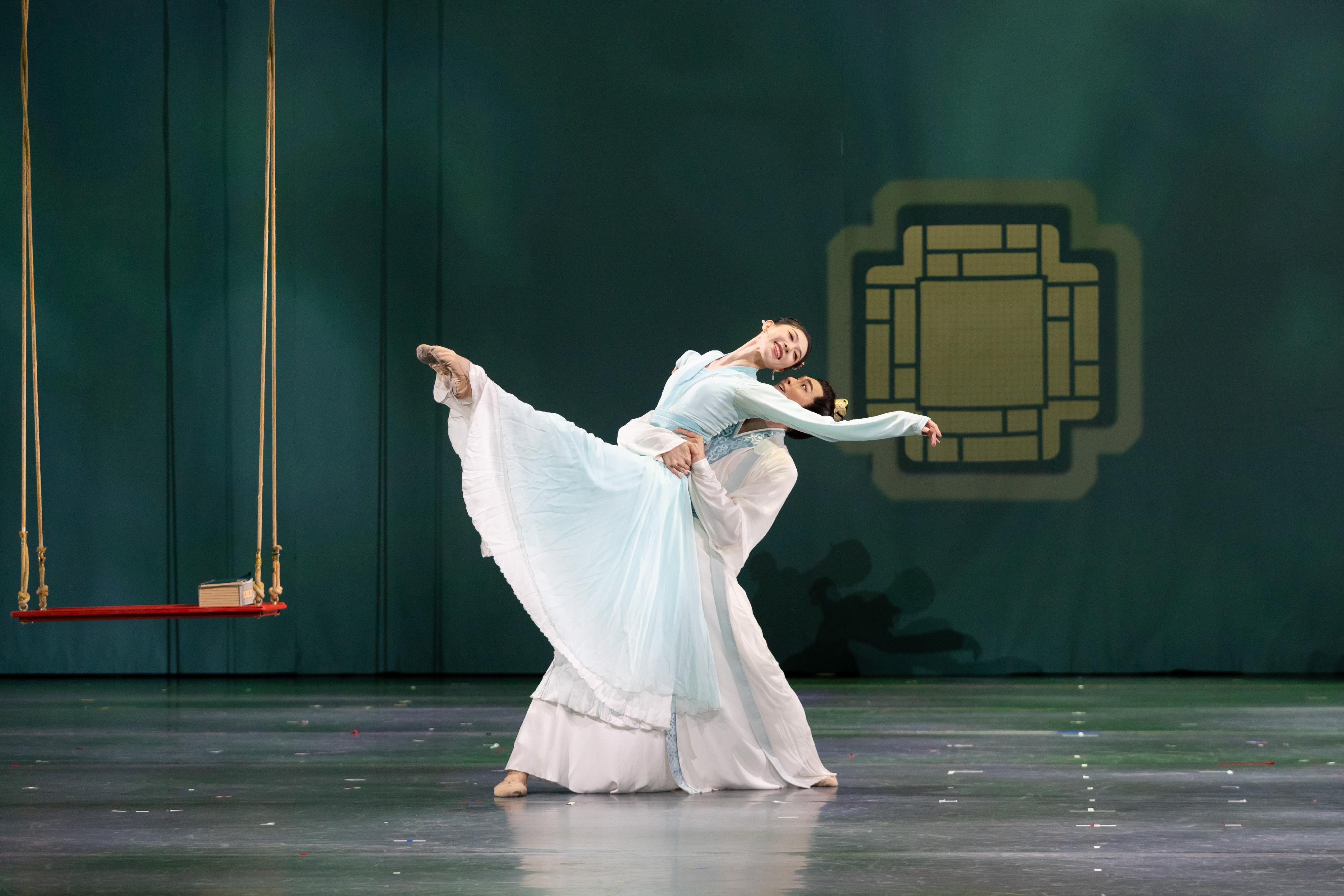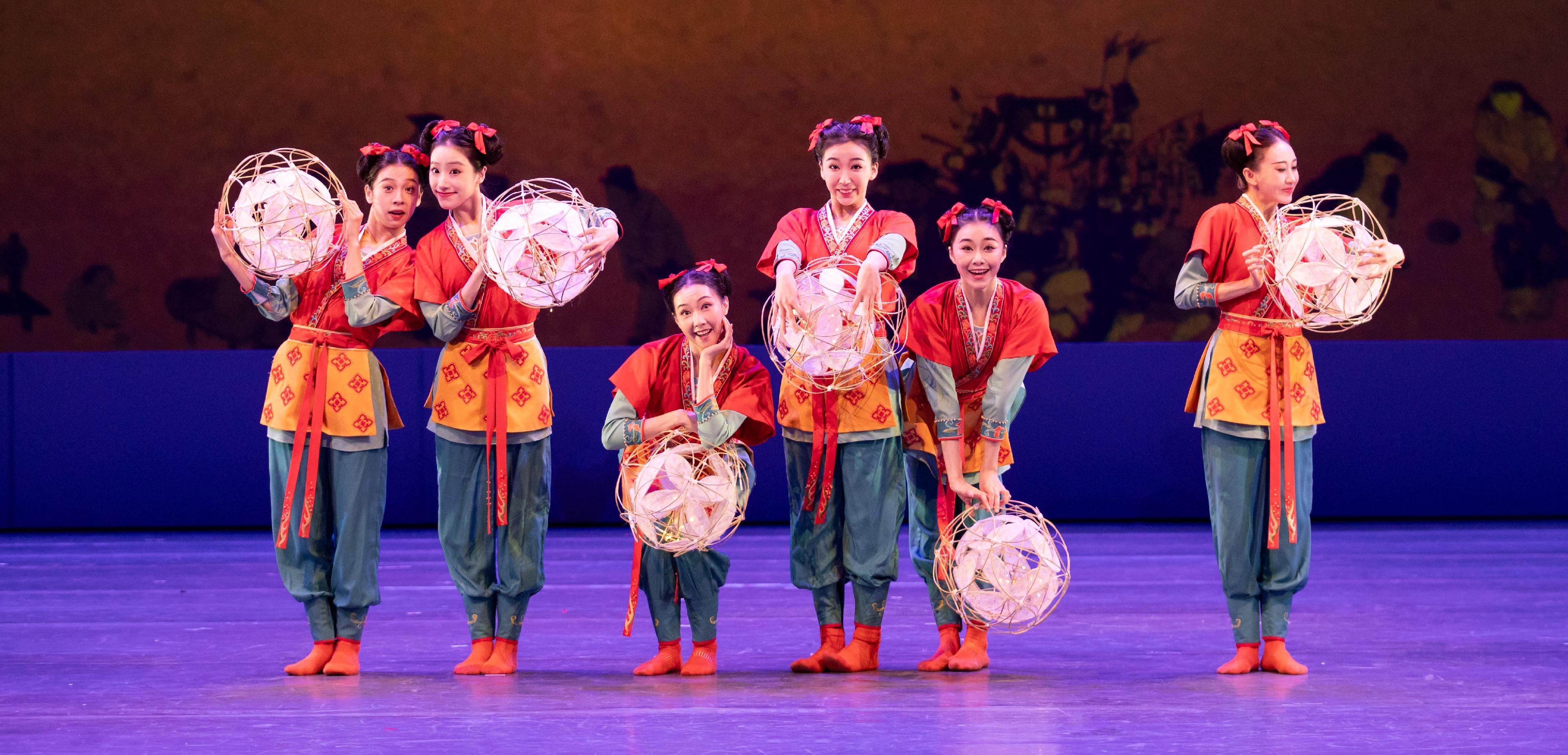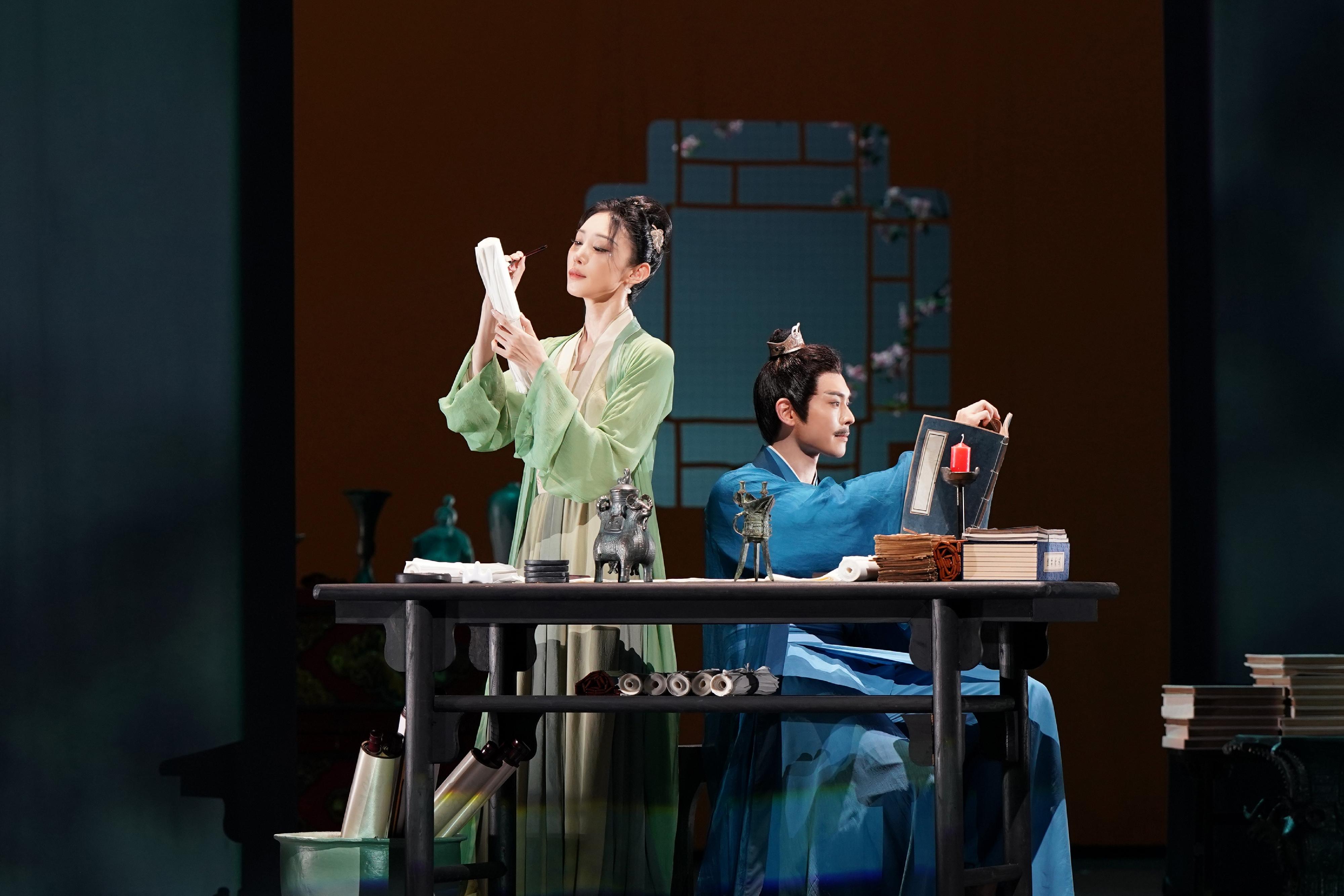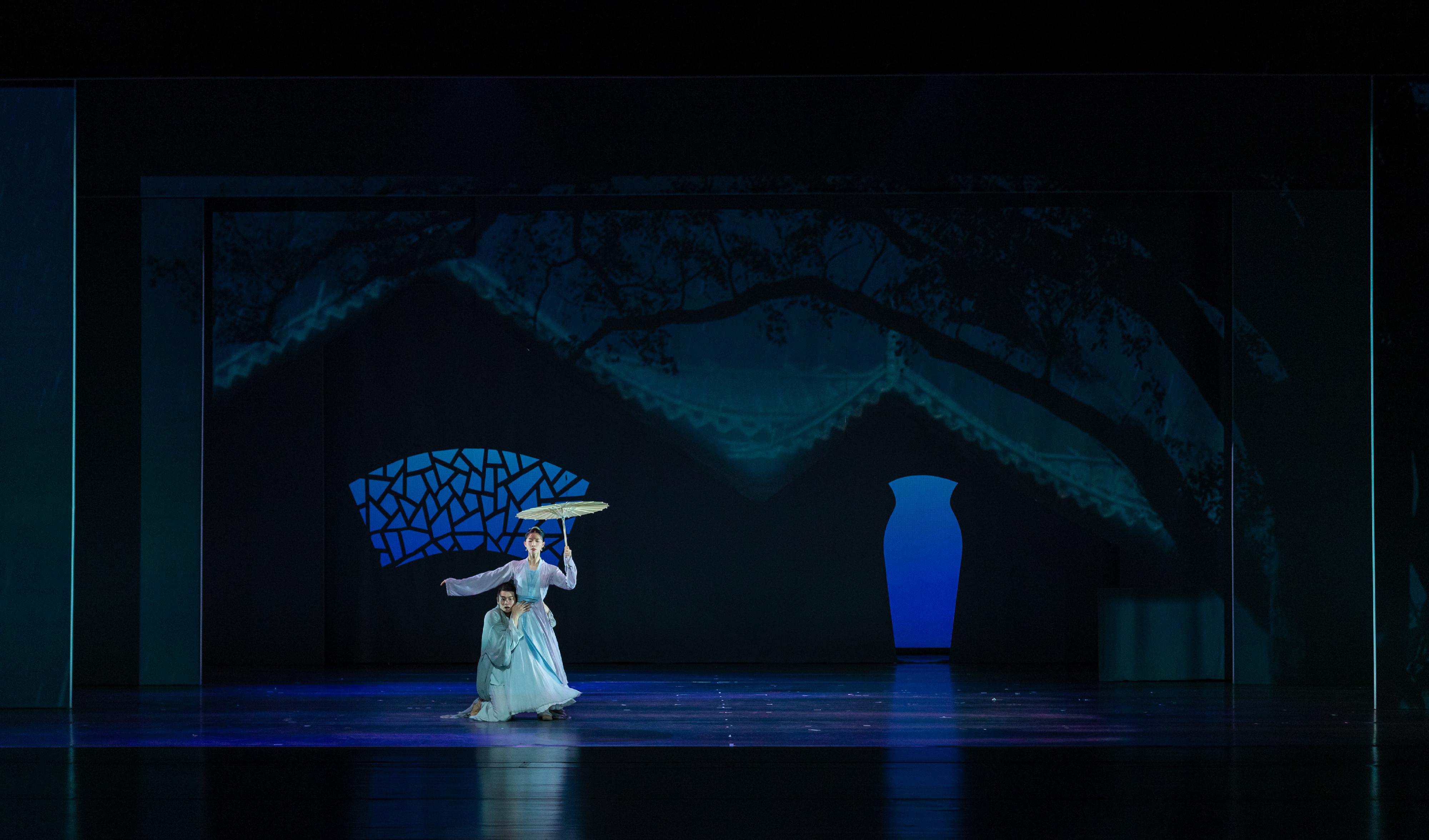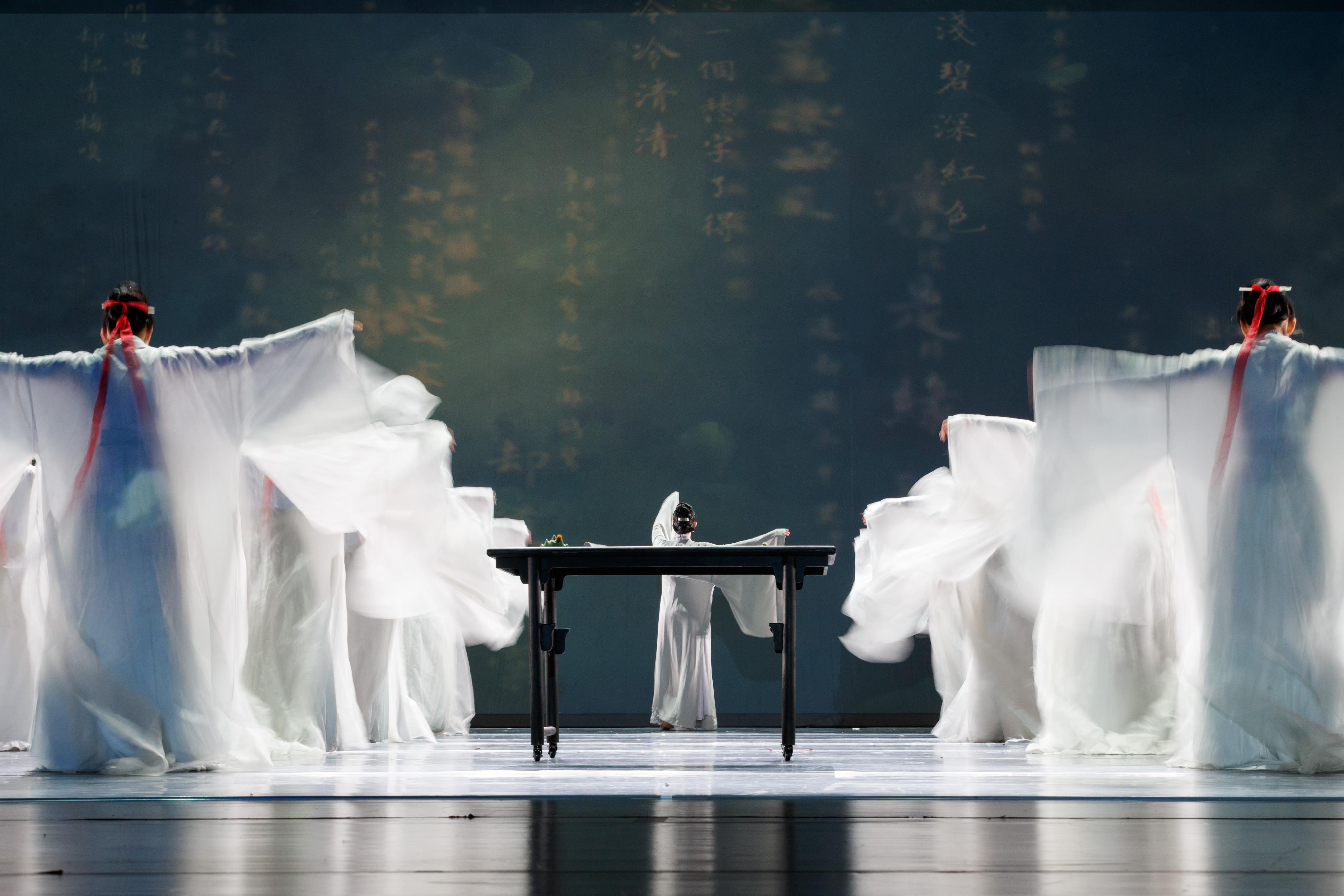New Chinese-style dance drama "Azure After the Rain" to fly high at Chinese Culture Festival with elegance of Song poetry in September (with photos)
******************************************************************************************
"Azure After the Rain" unfolds through 15 titles of "cipai" (classical poetic song tunes), weaving Li's life journey with dance interpretations of her iconic verses. It begins with Li's early literary fame captured in "Struggling to get out, struggling to get out, I startled a whole sandbar of egrets into flight", then depicts her love at first sight with her first husband Zhao Mingcheng during the Lantern Festival. The upheaval of the Catastrophe of Jingkang ignites Li's patriotic defiance with "In life be a hero among men, in death be a champion among ghosts", while mournful widowhood finds expression in "Searching, hunting, seeking, looking, so chilly and yet so clear, distressed, dismal, and forlorn". After remarrying the deceitful Zhang Ruzhou during the southern migration, her betrayed heart inspired "The objects are right, the people wrong, everything is over now! About to speak, tears first flow". The finale transcends personal sorrow as she gazes upon war-torn lands, expressing "Take my blood-stained tears to those hills and rivers, and sprinkle them on a clod of East Mountain soil". Li resolved to compile and critique the "Catalogue of Inscriptions on Metal and Stone", and to continue the Chinese literary legacy.
The creative team of the production has chosen Ru porcelain as the key motif embodying Li's life journey, as the cracks that emerge during the firing process - from smooth glaze into a web of intricate fissures - mirror the trajectory of her life. The shift in her poetic style, from lyrical tenderness to bold intensity following the Song dynasty's migration to the south of the Yangtze River, is also reflected in the choreography of the dance drama. By blending the cadence of classical dance with modern dance's innovative expressiveness, the production conveys the literary essence and patriotic sentiments embedded in Li's verses, while showcasing the cultural aesthetics of the Song dynasty, intangible heritage and folk traditions. For instance: the duet between Li and Zhao upon their first encounter ingeniously incorporates the classical dance technique "xiaowuhua" (a fluttering hand movement), to convey the timid yet profound connection. Meanwhile, the "rolling lantern dance" segment integrates performance elements of rolling lantern (gundeng) traditions from across China, revitalising the cultural vitality of this intangible heritage.
This dance drama, embodying the refined elegance of Shanghai-style culture, draws inspiration from the aesthetic essence of the Song dynasty. Its stage design is minimalist yet sophisticated, emphasising the artistic use of negative space. Through set pieces such as moon gates, lattice windows, chairs and tables, scholar's desks, inkstones, brushes, Ru porcelain, incense burners, tea sets and chessboards, it sketches an elegant tableau of Song-era living aesthetics. As Li spent the latter half of her life in Jiangnan (south of the Yangtze River), the work incorporates the region's garden architecture, structural motifs and folk customs. Many props are meticulously sourced from classical paintings and historical texts using 3D printing technology, bridging modern technology with fine Chinese traditional culture to revitalise its legacy.
In terms of stage choreography, the production seamlessly blends dancers' movements with dynamic colourful interplay, and extensively employs traditional Chinese hues. For instance, the serene celadon (azure after the rain) tone of Ru porcelain serves as the dominant tone for Li, while her introspective solos adopt cooler shades. Bustling market and court scenes burst with vibrant colours, and the Lantern Festival sequence dazzles with vine-yellow (tenghuang) and flower-blue (huaqing) tones to evoke festive exuberance. For music, the ethereal melodies of Song-era tunes intertwine with the rhythmic textures of Jiangnan silk-and-bamboo music, subtly infused with Western elements, creating a multidimensional homage to the charms of the Song dynasty and Jiangnan.
The creative team boasts an all-star lineup: Shanghai Dance Theatre's director Wang Yan serves as producer and artistic supervisor, joined by acclaimed choreographers Zhang Disha and Liu Xiaohe as chief directors, with renowned playwright Yu Rongjun, composer Guo Haowei, set designer Hu Yanjun, and more, which is a collaboration of industry luminaries and emerging talent. The production stars the troupe's chief dancer Zhou Xiaohui, and chief dancer with honour and glory Wang Jiajun, portraying Li Qingzhao and Zhao Mingcheng, respectively. Since its premiere as the opening programme of the 23rd China Shanghai International Arts Festival in October last year, the production has garnered acclaim and was selected as a 2024 China National Arts Fund support project.
Since its establishment in 1979, the Shanghai Dance Theatre has produced numerous artistic masterpieces, including the dance drama "Farewell to My Concubine", "Crested Ibises", "The Eternal Wave", and more. The troupe has been honoured with prestigious awards such as the Five One Project Award, the Wenhua Grand Award, the National Fine Stage Arts Project Award and the Gold Award of the China Dance Lotus Award. The troupe has performed in many countries and regions worldwide, earning widespread acclaim both domestically and internationally.
"City under the Moon - Dance Drama 'Azure After the Rain' by Shanghai Dance Theatre" will be held at 7.30pm on September 26 and 27 (Friday and Saturday) at the Grand Theatre of the Hong Kong Cultural Centre (HKCC). Tickets priced at $220, $280, $340, $420 and $500 are available at URBTIX (www.urbtix.hk). For telephone bookings, please call 3166 1288. Group booking discounts and package booking discounts are available for purchasing selected CCF stage programmes, the "Chinese Opera Film Shows" of the Chinese Opera Festival (COF) 2025 and the "Legacy and Vision: Conversations with Chinese Cultural Masters" lecture. For programme enquiries and concessionary schemes, please call 2268 7323 or visit www.ccf.gov.hk/en/programme/city-under-the-moon-dance-drama-azure-after-the-rain.
The programme will also feature a session under the "Chinese Culture for All: A Special Performance Series", with an open rehearsal to be held at 2.15pm on September 26 at the Grand Theatre of the HKCC. Admission is free for local primary and secondary school students to encourage them to participate in cultural activities and experience the wonders of Chinese culture and arts. This session is sponsored by the Paso a Paso Foundation Limited.
The CCF, presented by the Culture, Sports and Tourism Bureau and organised by the Chinese Culture Promotion Office under the LCSD, aims to promote Chinese culture and enhance the public's national identity and cultural confidence. It also aims to attract top-notch artists and arts groups from the Mainland and other parts of the world for exchanges in Chinese arts and culture. The CCF 2025 is held from June to September. Through different performing arts programmes in various forms and related extension activities, including selected programmes of the COF, "Tan Dun WE-Festival", film screenings, exhibitions, as well as community and school activities and more, the festival provides members of the public and visitors with more opportunities to enjoy distinctive programmes that showcase fine traditional Chinese culture, thereby facilitating patriotic education and contributing to the inheritance, transformation and development of traditional Chinese culture in Hong Kong. For more information about programmes and activities of the CCF 2025, please visit www.ccf.gov.hk.
Ends/Tuesday, August 26, 2025
Issued at HKT 11:00
Issued at HKT 11:00
NNNN







